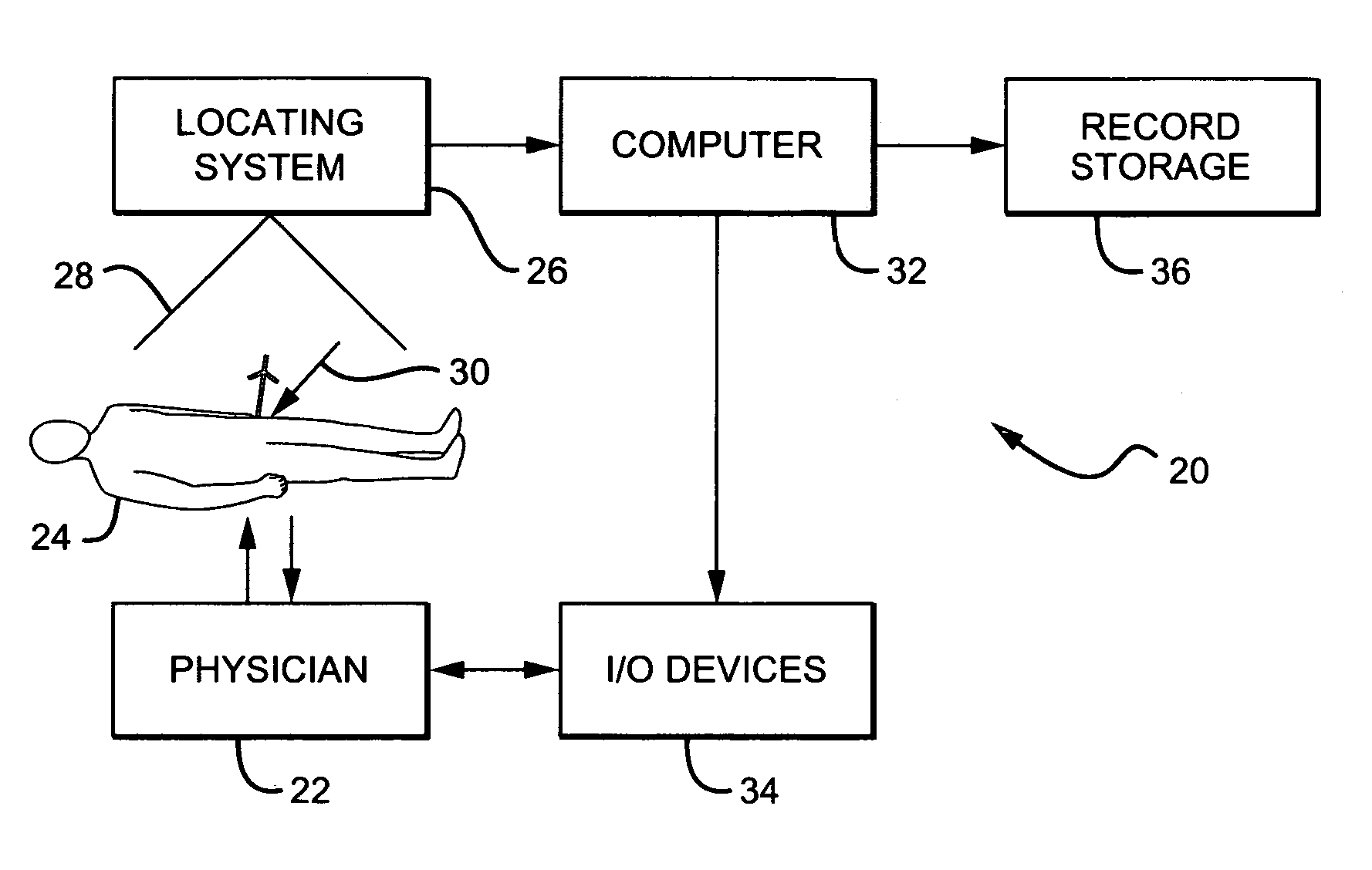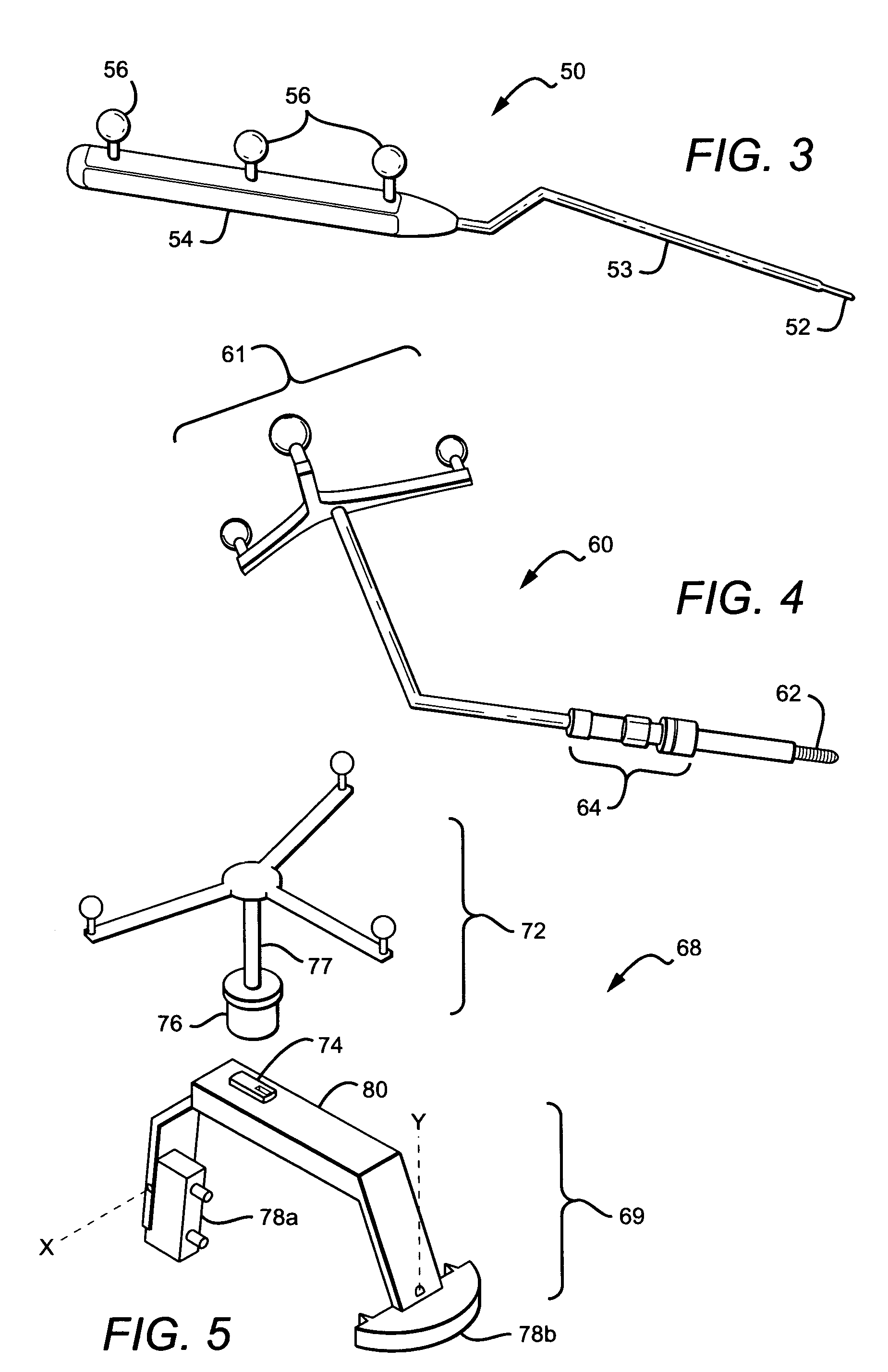Non-image, computer assisted navigation system for joint replacement surgery with modular implant system
a technology of joint replacement and navigation system, applied in the field of computer assisted total hip replacement or hip arthroplasty operations, can solve the problems of wear, deformation or even fracture, many procedures will eventually require revision, extreme pain,
- Summary
- Abstract
- Description
- Claims
- Application Information
AI Technical Summary
Benefits of technology
Problems solved by technology
Method used
Image
Examples
Embodiment Construction
Overview
[0035]Throughout the description of the invention, reference will frequently be made to “tracking” or “trackable markers.” This terminology is intended to denote any of several available methods of tracking objects in three dimensions without unwieldy mechanical frameworks or measuring devices. In the most preferred embodiment of the invention, optical tracking is employed, using optically trackable markers such as those available from Traxtal in Toronto, Canada. Similarly, in the description we will refer to a “locating system.” In a preferred embodiment of the invention, the locating system will be an optical, computer aided locating system such as the “Polaris” system available from Northern Digital Inc. in Waterloo, Ontario, Canada. However, it should be understood that other methods of tracking, locating systems, and trackable markers could be employed without departing from the invention. For example, magnetic, electromagnetic, ultrasonic, sonic, infrared, or microwave...
PUM
 Login to View More
Login to View More Abstract
Description
Claims
Application Information
 Login to View More
Login to View More - R&D
- Intellectual Property
- Life Sciences
- Materials
- Tech Scout
- Unparalleled Data Quality
- Higher Quality Content
- 60% Fewer Hallucinations
Browse by: Latest US Patents, China's latest patents, Technical Efficacy Thesaurus, Application Domain, Technology Topic, Popular Technical Reports.
© 2025 PatSnap. All rights reserved.Legal|Privacy policy|Modern Slavery Act Transparency Statement|Sitemap|About US| Contact US: help@patsnap.com



